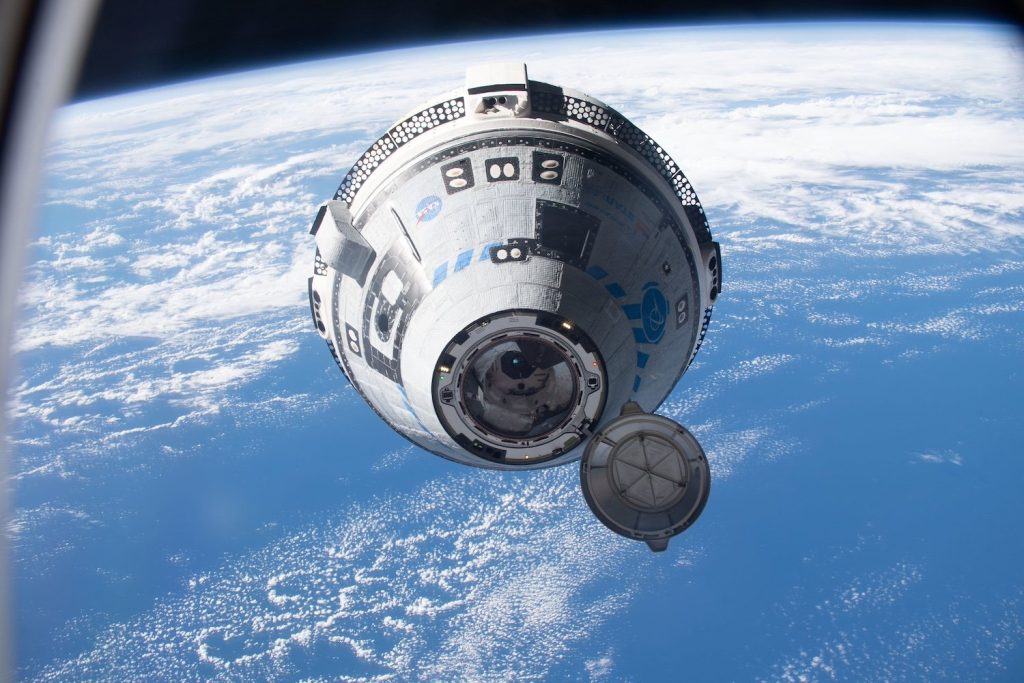
NASA Freezes Starliner Missions After Boeing Leaves Astronauts Stranded (Image Credit: Gizmodo-com)
In light of Starliner’s test flight that left its crew stranded in space, NASA will use SpaceX’s Dragon for the upcoming crewed flights to the International Space Station (ISS) while the space agency decides what to do with Boeing’s troubled spacecraft.
This week, NASA announced that a Crew Dragon will launch its Crew-10 mission no earlier than February 2025, followed by the Crew-11 mission no earlier than July 2025, delaying Boeing’s CST-100 Starliner’s next chance at flying to the ISS. NASA had hoped that Starliner would launch its first operational mission by early next year but the spacecraft’s first crewed test flight proved to be a complete fiasco, leaving Boeing nowhere near its coveted certification.
“The timing and configuration of Starliner’s next flight will be determined once a better understanding of Boeing’s path to system certification is established,” NASA wrote in its update. “This determination will include considerations for incorporating Crew Flight Test lessons learned, approvals of final certification products, and operational readiness.”
NASA is considering different options for system certification, including a proposed Starliner flight sometime in 2025, the space agency added. However, it’s not clear whether the upcoming flight would have a crew on board or if the spacecraft will fly solo to the ISS.
Boeing’s Starliner launched to the ISS on June 5, carrying NASA astronauts Butch Wilmore and Sunni Williams for the spacecraft’s first crewed test flight. The spacecraft remained docked to the space station for three months as teams on the ground debated whether or not to return the crew on board Starliner.
During its trip to the ISS, five of the spacecraft’s thrusters failed and the spacecraft developed five helium leaks, one of which was identified prior to liftoff. Mission teams ran tests on the ground to try and identify the main issue behind the thruster glitch before ultimately deciding to return an uncrewed Starliner and bring back its crew on board SpaceX’s Dragon spacecraft. Wilmore and Williams will return to Earth with SpaceX Crew-9 in February 2025, having spent eight months on board the ISS as opposed to the original plan of a week-long mission in orbit.
In 2014, NASA awarded Boeing and SpaceX contracts as part of the space agency’s Commercial Crew Program to develop spacecraft capable of carrying crew and cargo to the ISS. At the time, Boeing was a well-known force in the industry while SpaceX was a relative newcomer with a lot to prove. Over the past four years, SpaceX exceeded expectations, launching nine crews to the space station while Boeing is still struggling to get certified for its first mission.
Boeing has yet to meet the end of its $4.3 billion Commercial Crew Program contract with NASA. The company’s CST-100 Starliner was first conceived in 2010, built on a long legacy of designing and building spacecraft for Apollo, but its journey to the ISS was marred by several delays and failures.
Starliner’s first uncrewed test flight in 2019 managed to reach space, but a software automation glitch caused the spacecraft to burn excess fuel, preventing it from making it to the ISS. Starliner miscalculated its location in space due to a glitch caused by a faulty mission elapsed timer.
The botched first flight prompted NASA to call for a second test flight of the empty spacecraft before a crew was to ride on board. In May 2022, Boeing completed the Orbital Flight Test-2 (OFT-2), the second uncrewed test flight of Starliner, setting the stage for a crewed test flight. But OFT-2 suffered a few hiccups, including the failure of a thruster used for orbital maneuvering.
NASA’s retirement of the Space Shuttle prompted the need for a new spaceship for its ISS astronauts. The space agency sought to wean itself off dependence on Russia’s Soyuz for crew transport and invested heavily in developing partnerships with private aerospace companies.
Despite Starliner’s less-than-ideal uncrewed flights, NASA still went ahead with the most recent crewed test flight, hoping that the spacecraft could finally be ready to transport its crew to the ISS on a regular basis and for the space agency to have two commercial partners servicing the space station.








